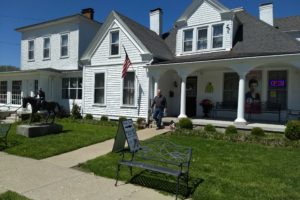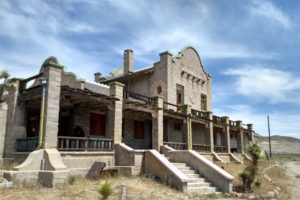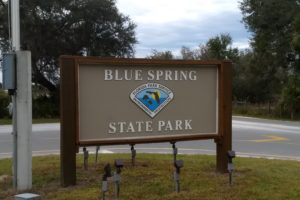As we continued walking through the view of history in Raleigh and the nation through the eyes of the Mordecai family, we’re starting with the time period of the Civil War from 1861-1865 and continuing on to the 1960s when the city of Raleigh bought this property.

Civil War Era of 1861-1865

During the years of the early republic and antebellum eras, Americans debated the meanings of liberty, independence, and citizenship. Slavery was the issue tearing the nation apart. As early as the Constitutional Conventions in the 1780s, Northern and Southern politicians were clashing. As the United States started expanding westward after 1820, the struggle intensified. By the middle of the century, some Southerners were suggesting that the South should withdraw from the United States so they could maintain the way of living that the plantation owners were used to.

2. On October 1, 1863, Henry Mordecai supplied the Confederate Army with 250 cords of wood and 100,000 clapboards as shown on this invoice.
3. From the Wilmington Daily Herald on April 22, 1861, Henry Mordecai and other prominent men in Raleigh donated $20,000 (equivalent today to $648,662) to establish a Confederate artillery company.
In 1860, the election of President Abraham Lincoln, the representative of the newly formed Republican Party, became a breaking point. Believing that he was a threat to slavery and the South, 11 southern states seceded from the Union and formed the Confederate States of American in 1861. North Carolina was the last southern state to secede in May 1861.
Even the women got involved. From the Semi-Weekly Standard on May 24, 1862, Martha Hinton Mordecai and other women in Raleigh raised money for the construction of a Confederate Ironclad. The image of Martha in the following picture shows what she looked like around 1890.

However, not everyone in the family supported the views of the South. Major Alfred Mordecai, a brother of Moses, was a career military officer who graduated from West Point in 1823 at the top of his class. During the Civil War, he refused to bear arms against either side. He resigned from the U.S. Army and declined a commission in the Confederate Army.

So how did Southerners view the Civil War? Depends on whether they were Africans, poor farmers, or rich plantation owners. The middle class in the South didn’t really exist during this time since there were few large cities and most people lived in rural farming areas.

Slaves and free blacks both actively participated in the struggle for freedom. Many slave men ran away to join the Federal army. White Southerners, however, didn’t see the struggle in the same way.

battle lines affecting the Mordecais

The Mordecai plantation was an active place during the Civil War. Starting in 1863, hundreds of slaves from plantations across the state were brought here to dig entrenchments and build a wall around the city. A fortification known as the Raleigh breastworks ran through the Mordecai property. (A breastwork is a temporary fortification, often an earthwork thrown up to breast height to provide protection to defenders firing over it from a standing position.

Reactions to the Union occupation depended on who you were. Many slaves cheered when Sherman’s army arrived, taking the opportunity to abandon the plantation and seek shelter in Union camps. (Eventually these slaves were able to have their own homes and land.) However, planters feared Sherman’s arrival; Jacob Mordecai fled into the country for safety.

In her memoir Gleanings from Long Ago, Ellen Mordecai (Jacob’s daughter) remembered work being done by some of the slaves on the plantation. “Ung Charles” made shoes in his cabin that was by the spring. Nanny spun the thread needed to piece the shoes together. This type of work was done by slave cobblers and weavers on plantations. One leather shoe was found in the cellar wall of the Mordecai House.


The Reconstruction era started right after the end of the war and went until 1877. Understanding this time frame is crucial because it set up the hardships that blacks in the South had to deal with. If President Lincoln had lived to put his mark on this timeframe, I think that life in the South would have been so different. From what we’ve learned about Lincoln’s goal for the country after the war was to unite the North and the South so all would feel welcome in the United States.
Lincoln’s successor, Andrew Johnson, was from Raleigh, and he put his Southern stamp on this time period that made life harder for the Africans who lived in the South after the war. If you don’t know much about President Johnson, I’ve included information about him in the next post when we walk around the grounds. The White House historical website and Wikipedia provided this information.
Growing up in Iowa, all I really knew about this time period came from the movie Gone With the Wind. Its take on the Reconstruction Era included the carpetbaggers who came from the North. Since the movie reflected the views of the Southern planters, the view of these people was pretty negative. I thought this would be a good time to look at Wikipedia’s information on this aspect of life after the Civil War.
Carpetbagger was a derogatory term applied by Southerners to opportunistic Northerners who came to south after the war to exploit those living here for their own financial, political, and/or social gain. The term broadly included both individuals who sought to promote Republican politics (including the right of African Americans to vote and hold office) and saw business and political opportunities because of the chaotic state of the local economies following the war.
In practice, the term carpetbagger was often applied to any Northerner in the South during this time. The term is closely associated with scalawag, a similarly pejorative word used to describe native White Southerners who supported the Republican Party-led Reconstruction.
Good to know our terms. In reality these men (I assume) were also helping the South get back on its feet, especially the former slaves and the poor white people.
Now back to the displays in the visitors center.

During the late 1860s, black men voted and held office for the first time in the nation’s history.

Plantation mistresses, such as Martha Hinton Mordecai, Moses’s wife, sometimes lashed out in anger like in the article in the previous picture. Other planter women, such as Ellen Mordecai, Moses’s daughter, found it difficult to do the household chores that their female slaves had done.

After the war, marriage became an option for many blacks for the first time.


Some freed people left the plantation and hoped to never return. Others had marriages recognized by law.

Between 1830 and 1860, thousands of North Carolina slaves had been sold to cotton planters in such Deep South states as Alabama and Mississippi. Some families were reunited, but others couldn’t find their family members.
Over the years, freed people made their homes around Raleigh. Aunt Betsy Homes and her bull, Joe, were known around Raleigh and featured on local postcards in the early 1900s as her “horseless carriage.”

The ultimate expression of freedom for the recent slaves was the ability to purchase land and a home. Billy and Betsy Holmes, both former Mordecai slaves, bought a farm just a few miles from where we are now. Betsy would travel by bull and cart to the City Market where she sold produce.
In the 1930s, Alfred Mordecai remembered her selling vegetables and herbs from a stand. She also made and sold folk remedies for the locals. (I’m not sure how Alfred fit into the family, but some information at the end of this post shows an Alfred as one the 5 Little brothers who were the sons of Margaret Mordecai, the daughter of Moses and his 2nd wife (Ann Willis “Nancy” Lane), and William Little. The time period would fit this conclusion.)


From her obituary, “. . . an institution so good and wholesome, she made so much sunshine and inspired so much cockle-warming laughter with so good a grace, that it was self-cruelty to think of her as coming to an end. Consequently the news of her death was a shock for which Raleigh was fatuously not prepared. It is pleasant to think that there was no remorse in the surprise; the people of Raleigh were good to Aunt Betsy as she was good to them. She goes away well loved.” I think we all would like to have this obituary written about us.
From now on, servants were paid when they worked at the Mordecai House.

Several freed people remained on the Mordecai plantation after emancipation. The following picture is of Ananias Ruffin, Mittie Ann Ruffin, Jerry Hinton, and Chaney Hinton. The Ruffins spent their lives here and died in the early 1900s. Jerry and Chaney were either siblings or cousins.

The freed people kept doing what they knew how to do, such as farming and domestic work. It would take them a while to learn new skills and build their own businesses.
The foundation of the 20th century started in 1880 and went on to 1920.

Another reason for selling land was that farming was no longer as profitable as it had been. Now the workers had to be paid, and much of the land growing cotton was too tired to continue producing.
Much of the business transactions that happened at the turn of the century are attributed to Patty Mordecai (1860-1949), the daughter of Henry and Martha, who received full title of the property in 1914 at the age of 54.
(Her father, Henry, had died in 1875 and her mother, Martha, had died in 1901. I’m not sure who was responsible for the property before Patty took over in 1914. One idea I had was that her oldest sister Margaret (1848-1918) may have owned it after her mother passed away and then passed it on to her younger sister Patty in 1914 before she herself died in 1918. If this is true, she would have owned it after her husband, William (1839-1879), had died at the age of 40. One of Margaret’s sons inherited the property when Patty died.)
In addition to selling land, she invested in stocks and bonds with companies such as R.J. Reynolds Tobacco and Carolina Power and Light.


While Patty was bound by tradition and didn’t work outside of the home, she was also a “modern” woman with business savvy. She enjoyed entertaining and was known for her sense of style.

Patty watched prohibition come and go, survived the Great Depression, and experienced 2 World Wars. In addition, she saw the development of airplanes and automobiles in the early 1900s. Patty Mordecai died in 1949 at the age of 89; since she hadn’t ever married or had children, she willed the Mordecai House and property to her nephew Burke Haywood Little who lived in the home until the early 1960s. Burke was the last person to occupy the home as a private residence. The City of Raleigh purchased the house in 1969.

the Little brothers
Margaret Mordecai (1848-1918), the daughter of Moses and his 2nd wife (Ann Willis “Nancy” Lane), married William Little who was a surgeon and Confederate veteran. After his early death, Margaret and her 5 sons lived at Mordecai House. Burke is the second from the right.

What a history lesson this post has been. My mind is reeling. Now let’s see what the Mordecai Historic Park looks like today.




